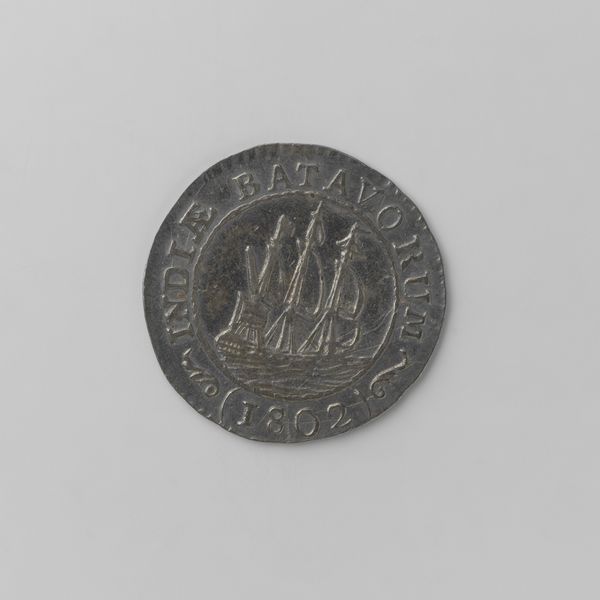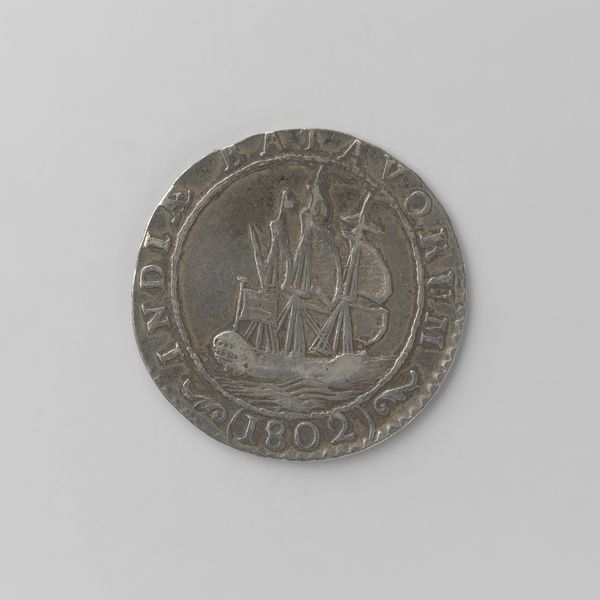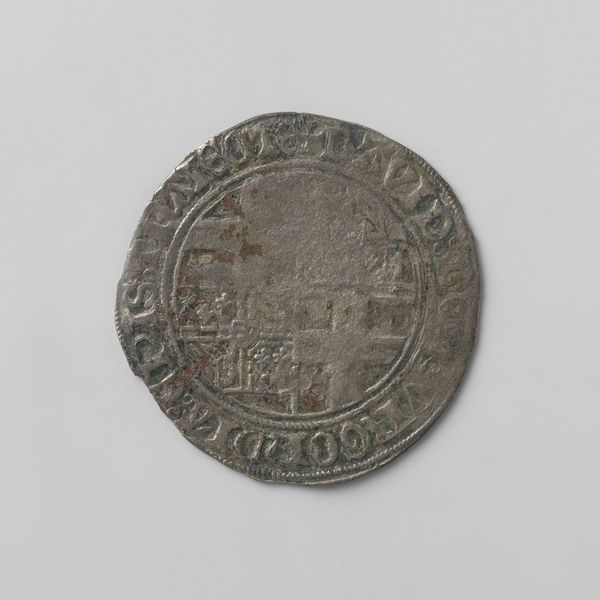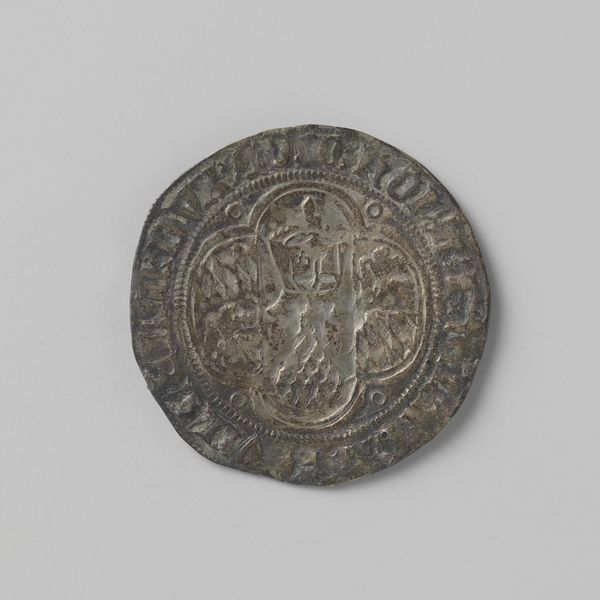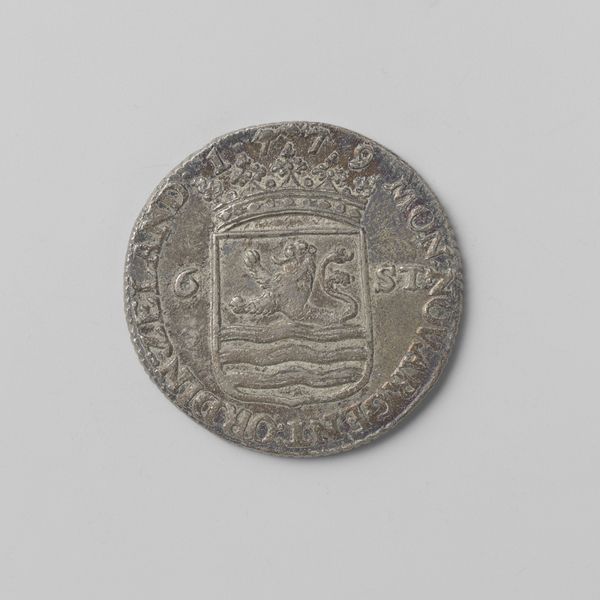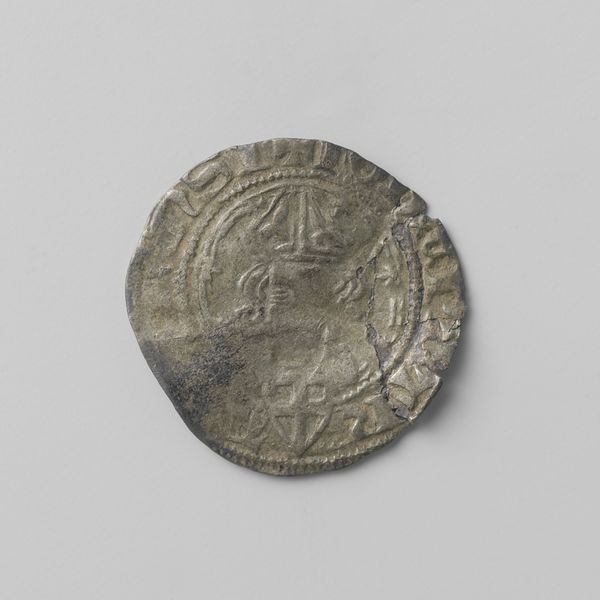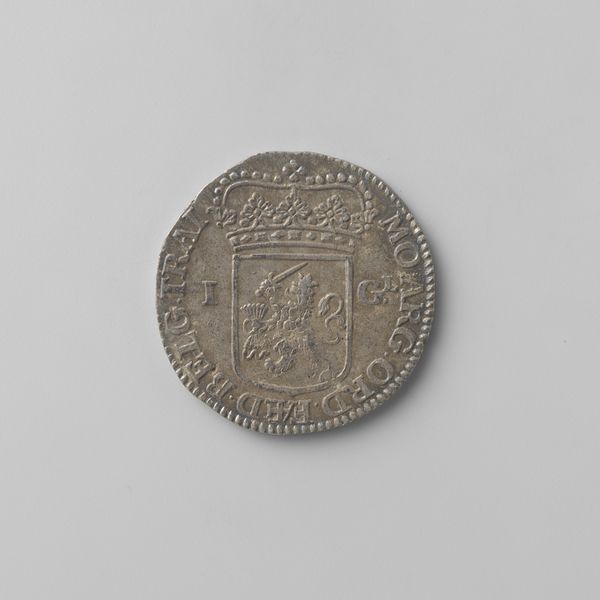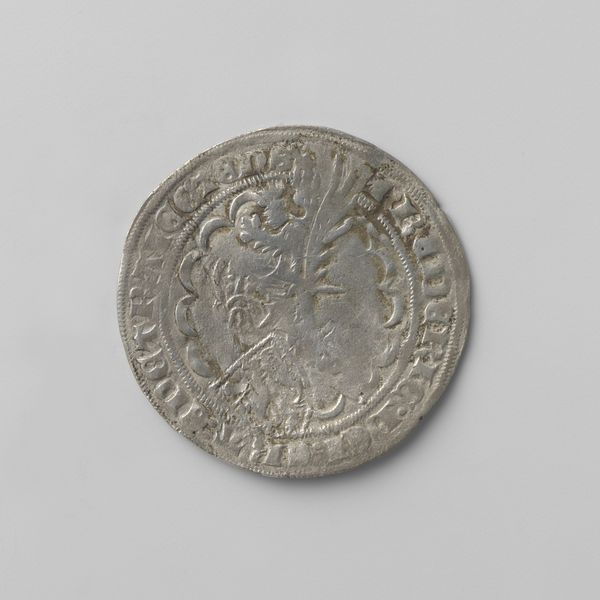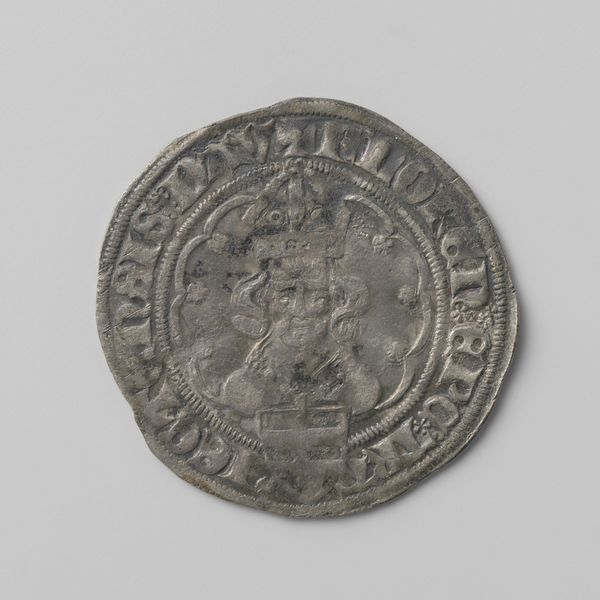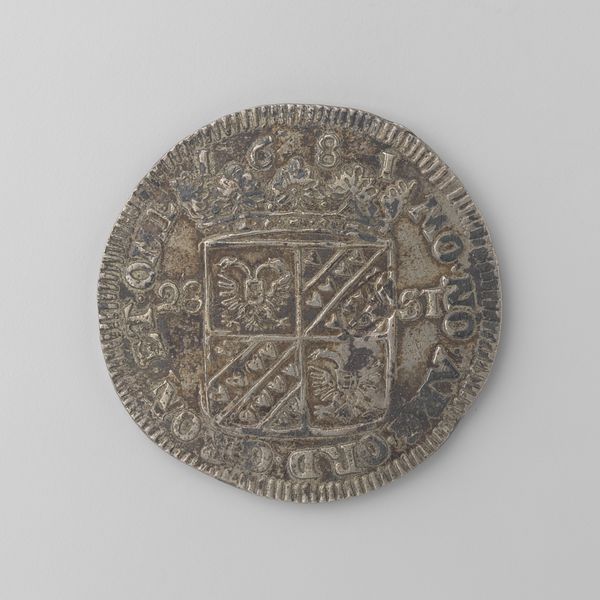
print, metal, sculpture
#
portrait
#
dutch-golden-age
# print
#
metal
#
sculpture
#
history-painting
Dimensions: diameter 3.2 cm, weight 10.72 cm
Copyright: Rijks Museum: Open Domain
This is a Gulden for the Dutch East Indies, crafted in 1802 by the Batavian Republic. The coin’s circular form is immediately apparent, its edges delineated by a textured rim. At its heart, a ship sailing the high seas is rendered through precise engraving. Note how the composition uses the ship as a central, anchoring form. The water below is represented by a series of curved lines, suggesting both movement and depth. The surrounding inscription in Latin, "INDIAE BATAVORUM," arches to frame the image. The Gulden functioned as a semiotic object, a symbol of economic and political power. The ship, a potent signifier, speaks to the era's maritime exploration, trade, and colonization. It isn't merely a vessel, but a representation of the Batavian Republic's reach and ambition in the East Indies. Consider how the Gulden's design merges aesthetics with ideology. It is an object of currency, but also a miniature, portable monument to Dutch imperial power. As such, this artwork opens a fascinating window into the complex interplay between art, commerce, and empire.
Comments
No comments
Be the first to comment and join the conversation on the ultimate creative platform.
